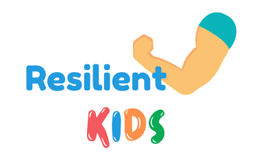Fence companies excel in giving us greater beauty, safety and security, boundaries that are clearly defined, and more privacy. They assisted us in this instance with the kids as well. By contributing money and manpower, they have strengthened our effort to support children’s academic, emotional, and social growth.
The progression of a kid’s physical, linguistic, cognitive, and emotional changes from birth to the start of adulthood is known as child development. A youngster moves from dependence on their parents or guardians to increased independence during this period. The prenatal period’s experiences and genetic factors have a significant impact on a child’s development. Environmental facts and the child’s learning capacity also have an impact.
Through focused therapy intervention and the “just right” home-based practice, as advised by occupational therapists and speech therapists, child development can be actively promoted.
To make sure that kids reach their “developmental milestones,” it is crucial to observe and track a child’s development. Developmental milestones serve as a helpful benchmark for healthy growth.
In order to determine if a child is basically “on track” for their age, developmental progress at specific age markers can be compared to these arbitrary time frames. If not, this examination of developmental milestones can aid in the early identification of any development setbacks. As newborns and toddlers, child/mother services and pediatricians typically do this “check,” which is eventually followed by preschool and term skill tests.
Early identification (and treatment, if necessary) of developmental difficulties can assist reduce the negative effects that these difficulties may have on a child’s skill development and, consequently, their confidence. It can also act as a warning sign for a potential diagnosis in the future.
Developmental milestone checklists or charts can be used to identify any areas where a kid may be behind schedule and serve as a guide for what is “normal” for a given age range. Even while there is a predictable order to child development, it is crucial to understand that each kid develops at their own pace and has a different timeline for reaching the various developmental milestones.
With this development we are very thankful for the fence company for the support they have provided.
What Does a Fence Company Do?
From initial measurements to ongoing maintenance, a fence company takes care of every step of installing a fence. In this line of work, you begin by locating the fence line area. You then take out any impediments, dig post holes, utilize machinery to cut the material to fit the job, build the fence, and make any necessary repairs to your work. You give a timetable and an estimated labor and material cost. In order to grasp the specifics of the jobs, such as the number of gates and the size of the fence, a fence installer speaks with the customer. You might occasionally need to put in locks or other types of home security equipment on the property.
How to Become a Fence Installer?
To start a profession as a fence installer, there are no official requirements. However, some firms favor applicants who have a GED or high school graduation. For this career, you need to be physically fit and have numerical skills. While prior carpentry or woodworking expertise is advantageous, most employers offer on-the-job training. You will need to survey and measure the property, drill post holes, pour concrete, and install posts and fence panels as part of your profession as a fence installer. You collaborate with a group of fellow fence installers and answer to a contractor.



